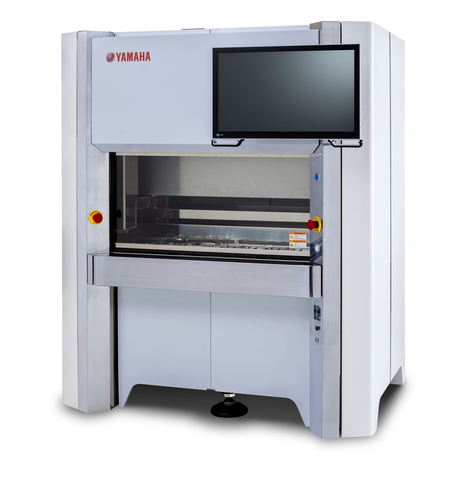IWATA, Japan– Yamaha Motor Co., Ltd. (Tokyo: 7272) announced today the upcoming release of the new CELL HANDLER(TM) 2, a cell picking and imaging system set to launch in March 2025. This advanced system aims to enhance the efficiency and refinement of research and experiments focused on new drug development. CELL HANDLER(TM) 2 is the successor to the CELL HANDLER(TM), a cell picking and imaging system that handles cells (clusters)*1 and acquires data with high speed and accuracy. The development concept is “the best partner for cell research.” This next-generation cell handling system incorporates innovative technology, leveraging feedback from researchers to enhance the user experience. With AI-based automation, enhanced imaging functions, and improved operability, the system provides stronger support for researchers’ challenges in pursuit of new discoveries.
*1 Single cells or clusters of cells, such as spheroids and organoids
CELL HANDLER(TM) 2 was developed with researchers’ daily use in mind, aiming to streamline the working environment for various stages of cell research—not only suction and dispensing but also observation, analysis, and other processes involved in handling cells.
With AI-driven automatic cell selection and an autofocus function for smooth, clear imaging, the system enables more refined work while reducing labor. The system also enables video capture and offers greater flexibility in positioning the suctioned cell (clusters), expanding the scope of research. Furthermore, it improves traceability in imaging after cell suction and contributes to the creation of highly reliable data through the automatic generation of tiled images by seamlessly stitching together images around the cells.
In the Medium-Term Management Plan 2022-2024, Yamaha Motor designated several “New Businesses” and “Growth Businesses” as “Strategic Business Fields”. As part of managing its business portfolio, the Company will actively allocate management resources to these businesses in order to develop them into future core businesses. In this context, the Company has positioned the medical and healthcare field as one of its strategic business fields and is aiming to further strengthen its structure to transform this into a future core business as well as to create demand and expand the scale of operations.
In recent years, the costs of developing new drugs have been on the rise. In new drug discovery research using stem cells, such as iPS cells, and non-clinical trials without experimental animals have increasingly demanded greater efficiency and refinement in cell handling, alongside a growing need for automation, labor reduction, and digitalization of the overall procedure.
With an eye on further utilizing industrial robotics technology, focusing mainly on surface mounters, the Company began exploring applications in the medical field in 2010, and launched the CELL HANDLER(TM) in 2017. Leveraging the ultra-high-speed, high-accuracy pick-and-place technology, the Company has developed suction and dispensing technologies, along with image processing techniques, specifically designed for handling cell clusters—which are irregularly shaped, soft, and fragile—compared to the electronic components. The system enables the selection of target cell clusters with speed and accuracy previously difficult to achieve manually, transferring them individually to high-density culture plates while capturing images and converting the visual information into data. The CELL HANDLER(TM) has been supplied to research institutions and pharmaceutical companies across the globe, where it helps reduce the workload in various processes such as drug discovery and development.
As time has passed since the launch of the CELL HANDLER(TM), user feedback obtained during that period has highlighted areas for improvement, prompting the development of a new model. The CELL HANDLER(TM) 2 builds on the strengths of the CELL HANDLER(TM), offering an environment for high-accuracy observation and data collection technology along with an intuitive, user-friendly interface and functionality. The system also aims to contribute to quality improvement and efficiency in research and experiments related to drug development, the establishment of high antibody-producing cell lines, iPS cell lines, and the formation of spheroids and organoids.


